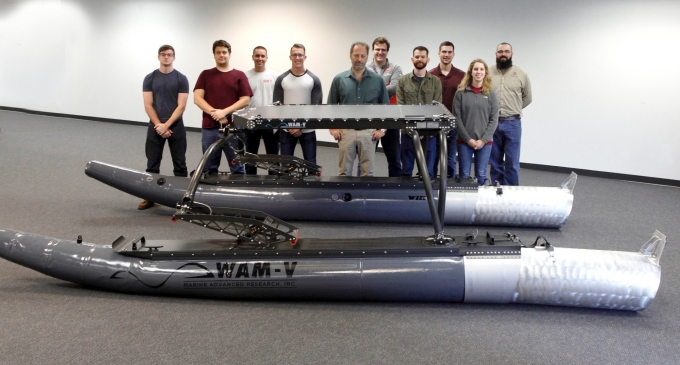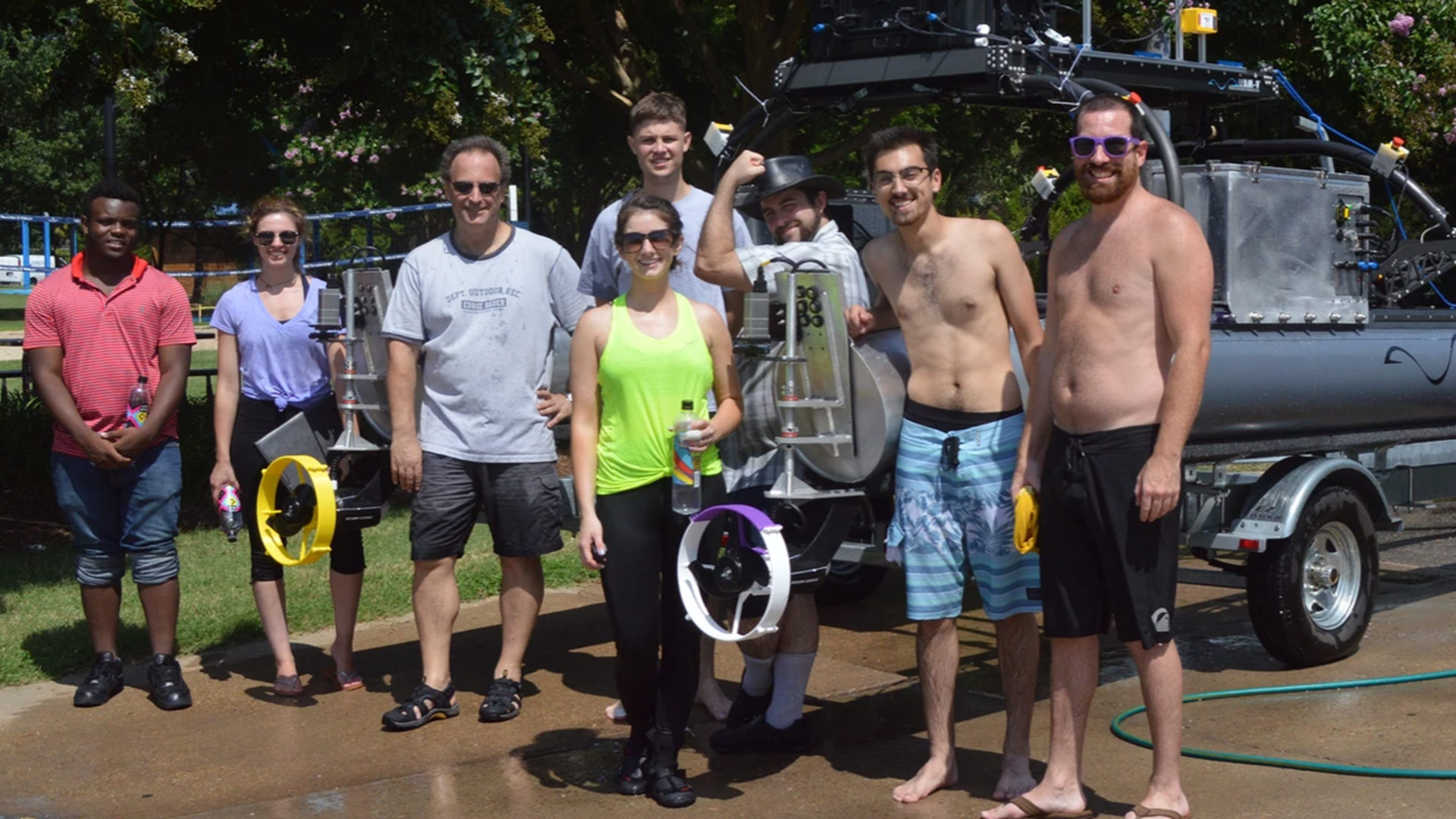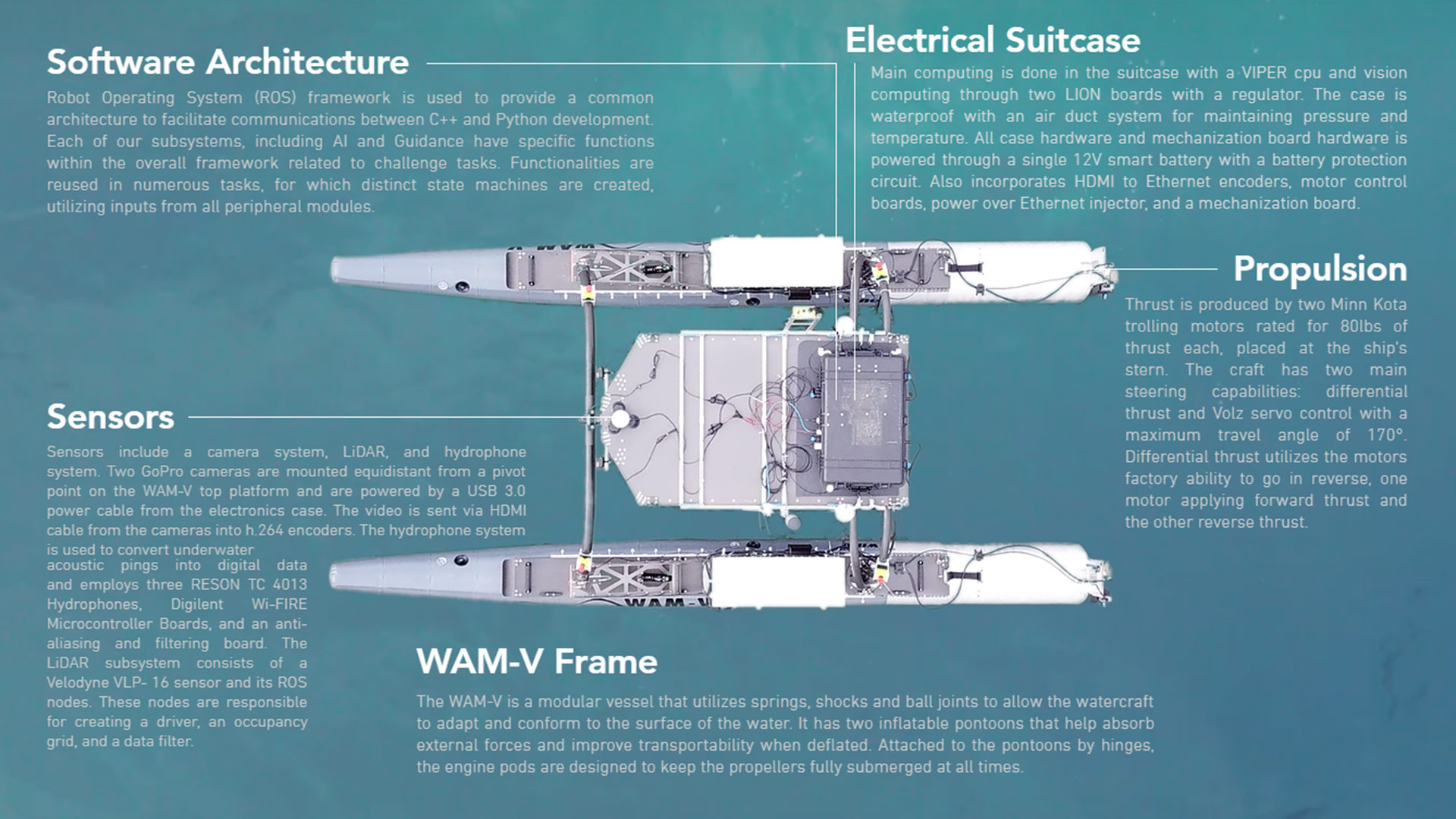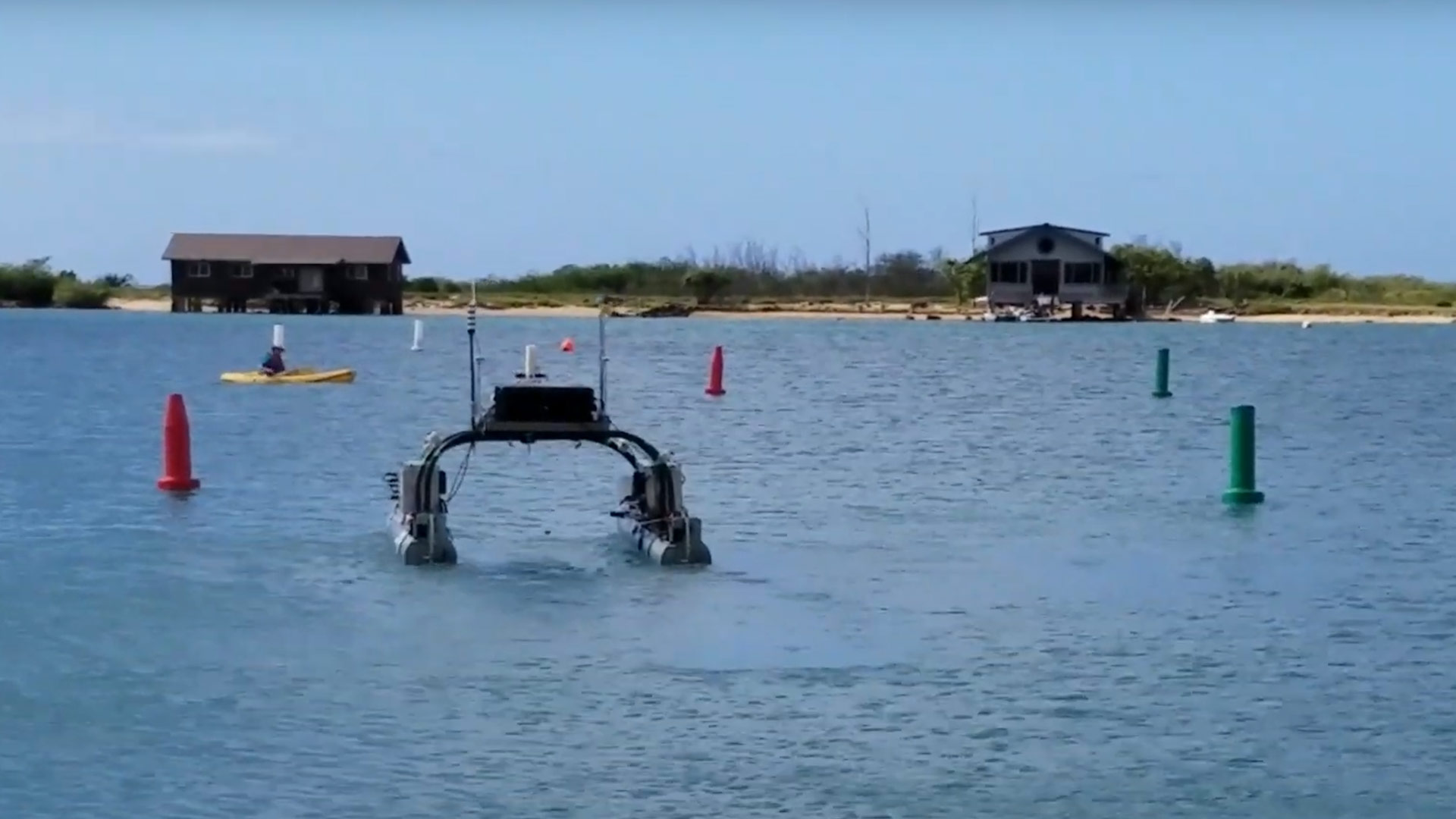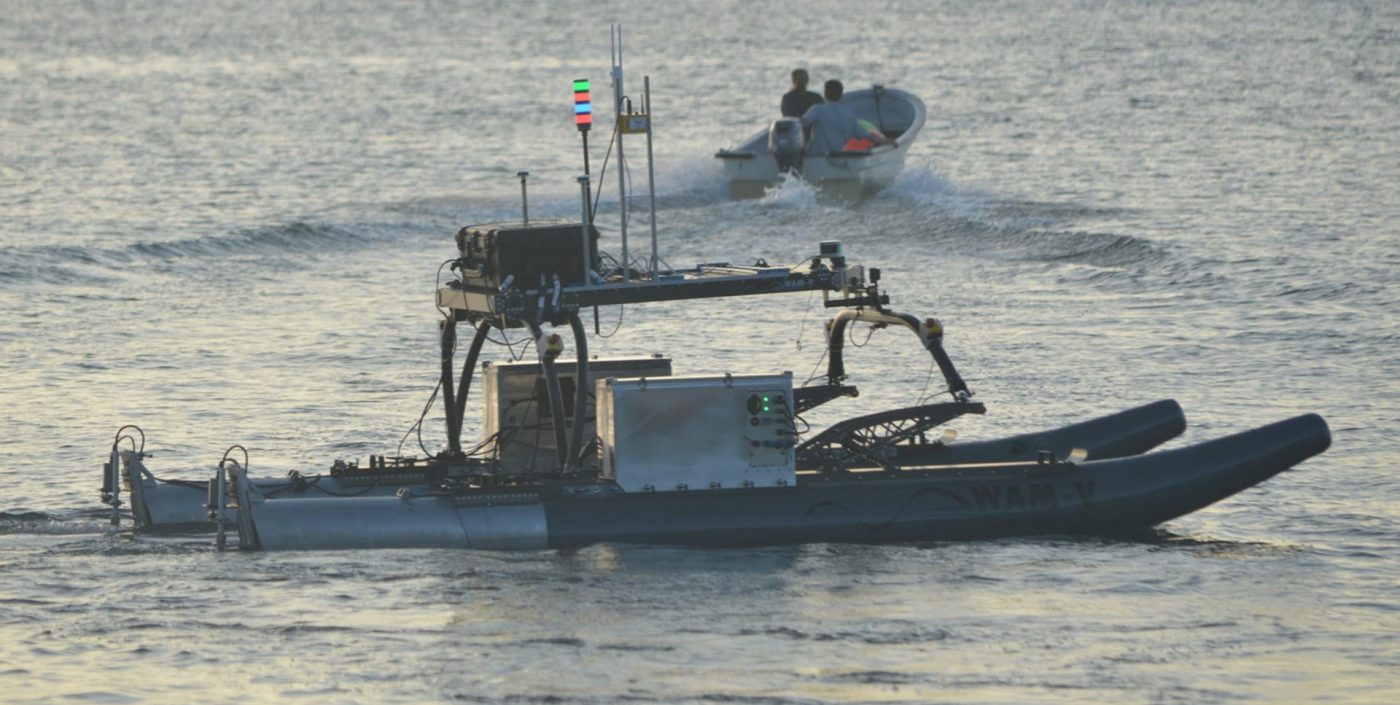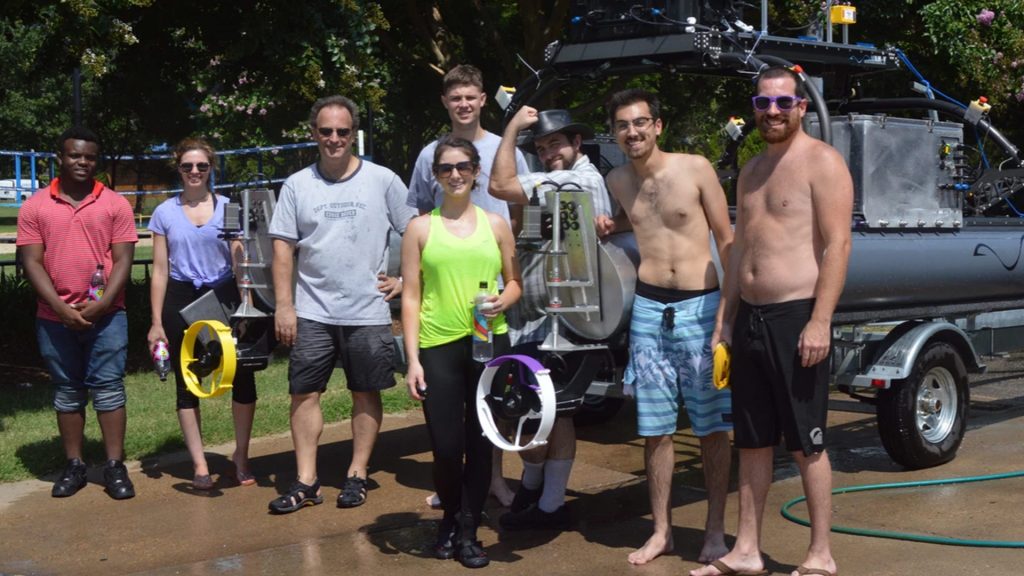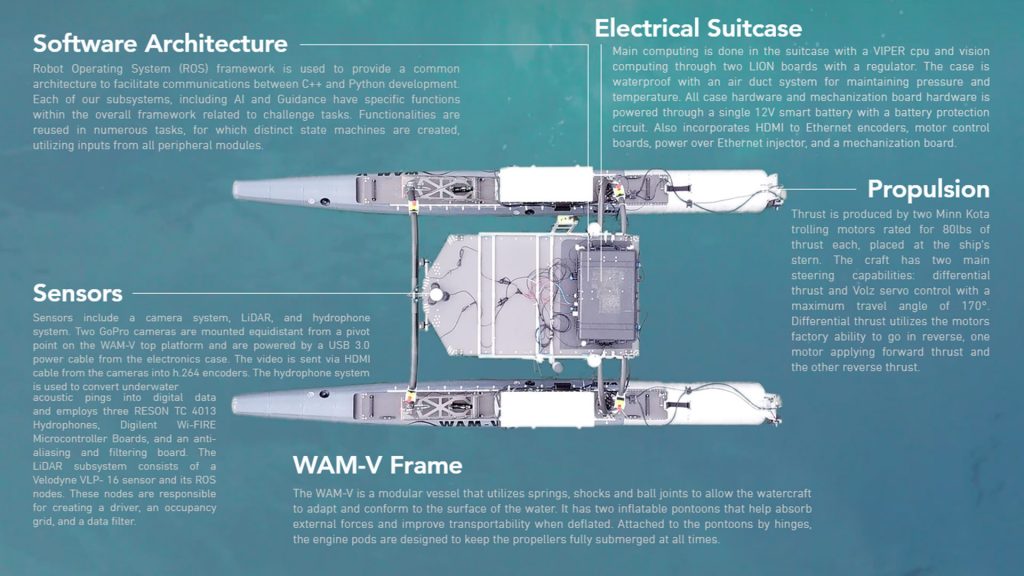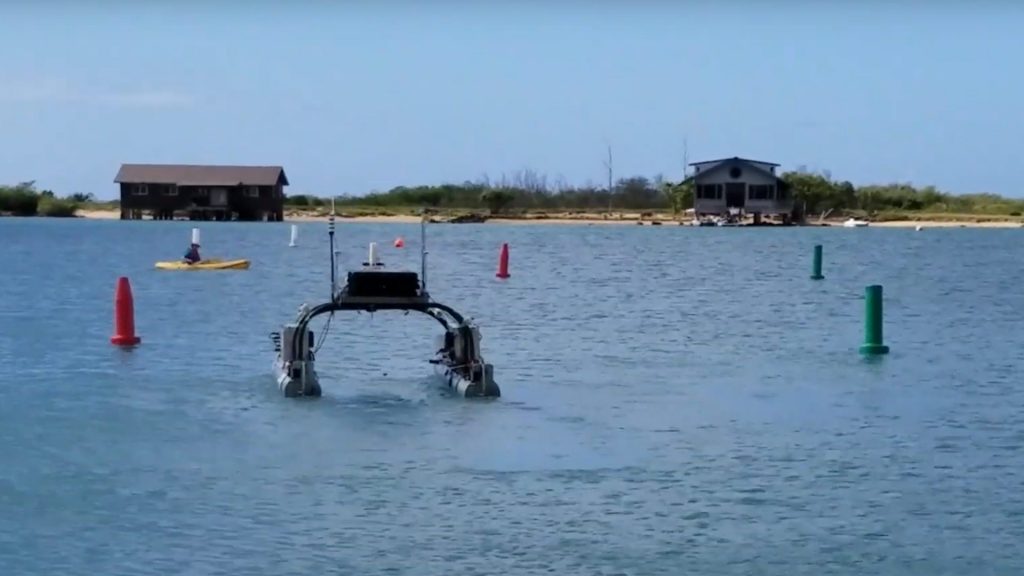Wave Adaptive Modular Vessel (WAM-V)
This project allowed ODU students opportunities to collaborate, learn, and contribute to cutting-edge developments in automation while developing advanced skills in various fields of programming, engineering, and manufacturing. The tasks performed and materials designed by the WAM-V team earned accolades and attention from the academic, governments, and industrial communities.
PROJECT DESCRIPTION
In order to help prepare the next generation of researchers and scientists, VMASC faculty often coordinate and lead student teams to design novel systems and solve real-world problems. VMASC’s Dr. Yiannis Papelis has long advocated for students to develop skills and knowledge in the fields of automation and robotics; last year, a group of students under his leadership designed, developed, built, and deployed an autonomous sea craft to compete against Asian, Australian, and American teams in the 2018 RobotX events in Hawaii.
The Wave Adaptive Modular Vessel, or WAM-V, was designed to adapt to environmental conditions in order perform various discrete tasks independent of human input; activities included obstacle avoidance, target object identification and location, situation awareness, navigation, underwater item recovery, and pattern identification. The exact sequence and features of these tasks were determined during the RobotX competition, and the WAM-V platform had to be adaptable to changing requirements and conditions.
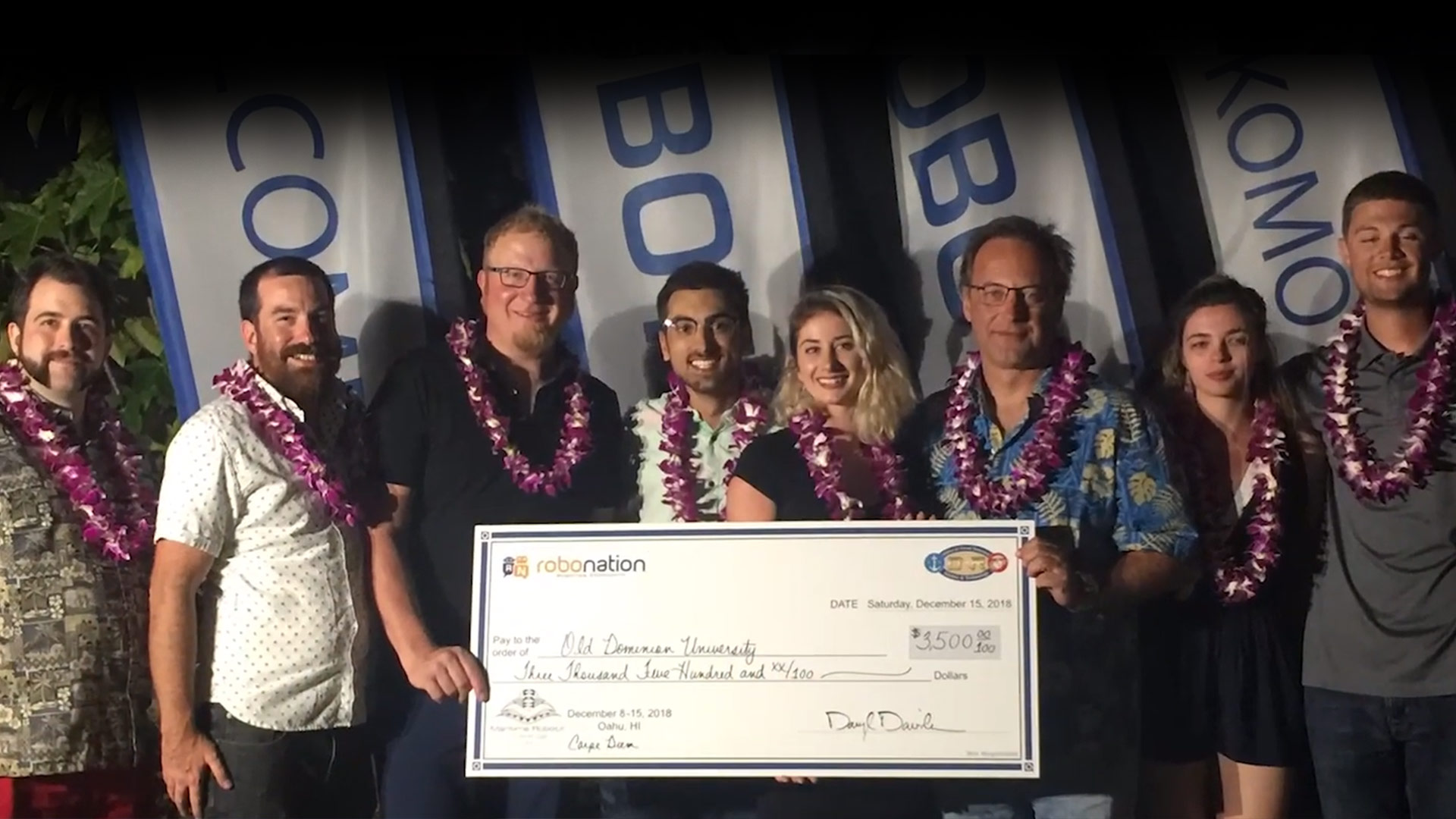
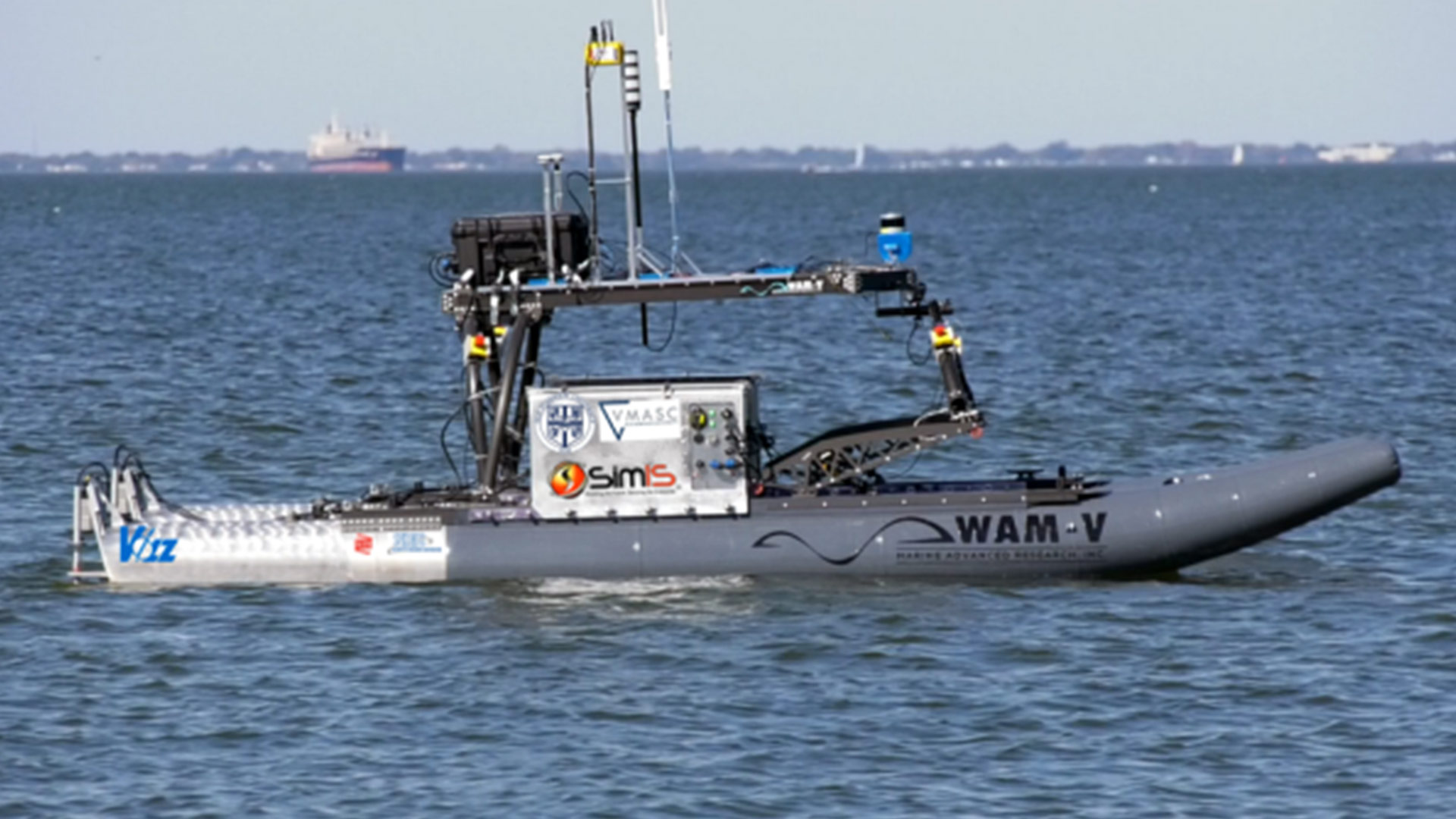
COMPETITION RESULTS
The ODU team attempted seven of the eight challenges; it was unable to compete in one because it lacked a required submersible.
"As a point of reference, however, there were six teams (including Georgia Tech and Michigan) that completed fewer tasks than we did and one team that completed the same tasks," said Yiannis Papelis, chief scientist and research professor at ODU's Virginia Modeling Analysis and Simulation Center (VMASC). "That put us somewhere around seventh place in the unofficial rankings."
Teams also had to create a website and video, write a technical design paper outlining their work and give a presentation. Nearly $100,000 in cash prizes were up for grabs. The ODU team came home with $5,300. The team also received $300 for being a first-time competitor.

Our presentation and our technical review both received a lot of positive feedback. We won the 'Carpe Diem' award, which came with $3,500 in prize money, for 'always going for the challenge' and being willing to try anything. We also took second place for our website design, which was a $1,500 prize.
Andrea Robey, Co-Captain
Wave Adaptive Modular Vessel (WAM-V)

PROJECT DESCRIPTION
This project allowed ODU students opportunities to collaborate, learn, and contribute to cutting-edge developments in automation while developing advanced skills in various fields of programming, engineering, and manufacturing. The tasks performed and materials designed by the WAM-V team earned accolades and attention from the academic, governments, and industrial communities.
In order to help prepare the next generation of researchers and scientists, VMASC faculty often coordinate and lead student teams to design novel systems and solve real-world problems. VMASC’s Dr. Yiannis Papelis has long advocated for students to develop skills and knowledge in the fields of automation and robotics; last year, a group of students under his leadership designed, developed, built, and deployed an autonomous sea craft to compete against Asian, Australian, and American teams in the 2018 RobotX events in Hawaii.
The Wave Adaptive Modular Vessel, or WAM-V, was designed to adapt to environmental conditions in order perform various discrete tasks independent of human input; activities included obstacle avoidance, target object identification and location, situation awareness, navigation, underwater item recovery, and pattern identification. The exact sequence and features of these tasks were determined during the RobotX competition, and the WAM-V platform had to be adaptable to changing requirements and conditions.
COMPETITION RESULTS
The ODU team attempted seven of the eight challenges; it was unable to compete in one because it lacked a required submersible.
"As a point of reference, however, there were six teams (including Georgia Tech and Michigan) that completed fewer tasks than we did and one team that completed the same tasks," said Yiannis Papelis, chief scientist and research professor at ODU's Virginia Modeling Analysis and Simulation Center (VMASC). "That put us somewhere around seventh place in the unofficial rankings."
Teams also had to create a website and video, write a technical design paper outlining their work and give a presentation. Nearly $100,000 in cash prizes were up for grabs. The ODU team came home with $5,300. The team also received $300 for being a first-time competitor.

Our presentation and our technical review both received a lot of positive feedback. We won the 'Carpe Diem' award, which came with $3,500 in prize money, for 'always going for the challenge' and being willing to try anything. We also took second place for our website design, which was a $1,500 prize.
Andrea Robey, Co-Captain

